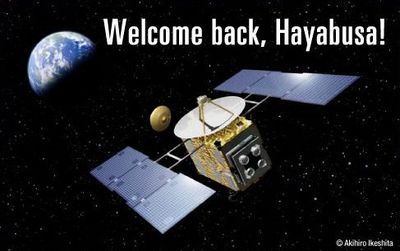 |
| Courtesy of NEC Corporation |
| |
Video
HAYABUSA's seven-year journey in space
http://www.nec.com/global/onlinetv/en/society/hayabusa_h.html
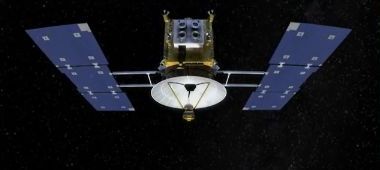 |
The probe's name was "Hayabusa".
Courtesy of NEC Corporation |
| |
An
asteroid probe departed
Earth on a round-trip journey that spanned billions of kilometers to search for secrets behind the birth of our solar system.
The probe's name was "
Hayabusa".
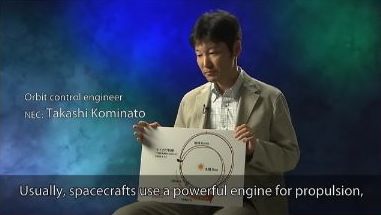 |
| Courtesy of NEC Corporation |
| |
Under the direction of
JAXA, the Japan Aerospace Exploration Agency, NEC was involved in the project as a system integrator. The journey was a miraculous achievement made possible by leading-edge technologies and
teamwork between human beings and machines.
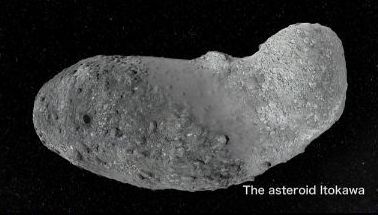 |
The asteroid Itokawa
Courtesy of NEC Corporation |
| |
Hayabusa's target was Itokawa, an
asteroid located between the orbits of
Earth and Mars.
To enter the asteroid orbit,
Hayabusa employed an
Earth swing-by navigation technique developed by
JAXA and NEC over many years.
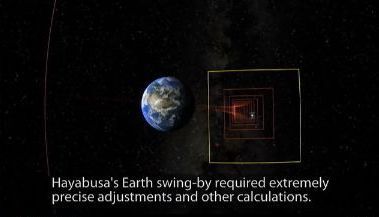 |
| Courtesy of NEC Corporation |
| |
(Mr. Kominato)
"Usually, spacecrafts use a powerful engine for propulsion, but, Hayabusa uses a combination of ion engines and Earth swing-by for its orbit control.
First, Hayabusa traveled all the way around Earth along approximately the same orbit as Earth, which took a year. The ion engines provided continuous thrust during this time. When the probe got close to Earth again, it performed a swing-by to use the gravity of Earth so as to increase the probe's acceleration.
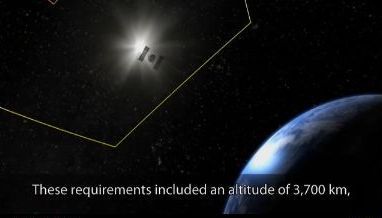 |
| Courtesy of NEC Corporation |
| |
Hayabusa's Earth swing-by required extremely precise adjustments and other calculations. These requirements included an altitude of 3,700 km, a positional error of 1 km or less, and a velocity error of 1 cm/s or less when the probe got close to Earth again. Hayabusa succeeded in meeting these requirements.
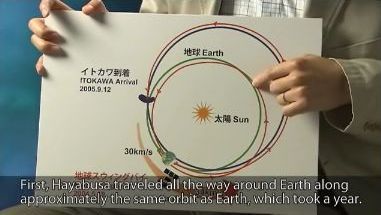 |
| Courtesy of NEC Corporation |
| |
An orbit control engineer at
NASA sent us an email to say "congratulations," on an "outstanding job". We were happy about that. Getting an email from
NASA made us feel like we really accomplished something."
In this way,
Hayabusa changed its orbit to that of the
asteroid Itokawa.
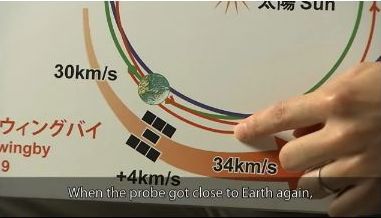 |
| Courtesy of NEC Corporation |
| |
As
Itokawa has almost no gravitational pull, landing on it is not possible, so Hayabusa had to collect a sample by simply touching down on the asteroid.
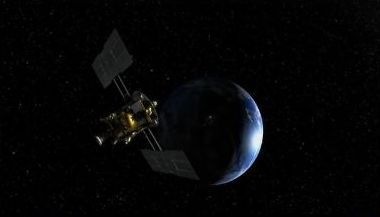 |
| Courtesy of NEC Corporation |
| |
(Mr. Hagino)
"When looking from
Earth, Itokawa is behind the sun and twice as far away from the
Earth as the sun. At this distance, we could only control Hayabusa about once every hour. Therefore, once it approached the asteroid surface, Hayabusa had to look at the terrain on its own, determine which way to tilt, and decide how Itokawa's rotation affected the probe position."
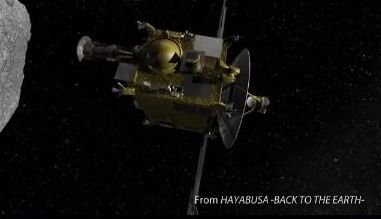 |
| Courtesy of NEC Corporation |
| |
Hayabusa successfully touched down by using various new methods and technologies, including a laser altimeter, a target marker, and a high sensitivity camera.
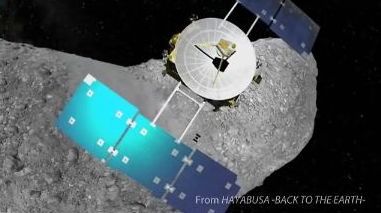 |
| Courtesy of NEC Corporation |
| |
Unfortunately, after the successful touchdown and asteroid takeoff, terrible events awaited:
Hayabusa lost its attitude control due to fuel leakage from its chemical engine, and communication with the probe was lost.
However, those on
Earth maintained their faith that
Hayabusa would respond.
Seven silent weeks passed.
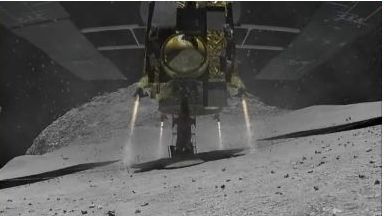 |
| Courtesy of NEC Corporation |
| |
(Mr. Hagino)
"We believed that, once sunlight could strike the solar arrays, a command would reach Hayabusa and we would hear back from it. However, although we were happy to hear from the probe, our first thought was that we needed to figure out how to fix it."
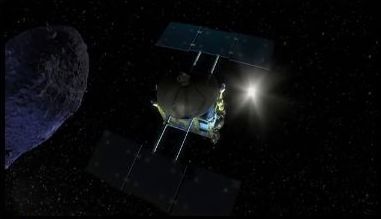 |
| Courtesy of NEC Corporation |
| |
By this time, it was no longer possible to use the chemical engine, which had lost its fuel, to control the attitude, so Hayabusa used its ion engines and solar power to start its return.
(Mr. Shirakawa)
"At that time, Hayabusa was returning with most of its attitude control capabilities lost, and our only available option was to use the neutralizers attached to the ion engines to generate a weak force, so we continuously used this force for a while to control and maintain the attitude.
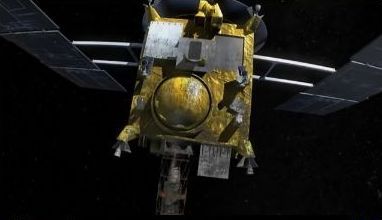 |
| Courtesy of NEC Corporation |
| |
We used this extremely weak force, the force of solar radiation, and other forces that could gradually change the attitude over time. This was a continuous process. If we tried to tilt the probe right, for example, we wouldn't know the results until the next day, so we would have come back the next day, check whether the probe was moving as we expected, and then apply force in the opposite direction if it wasn't.
I sometimes felt it was our duty to keep the light of
Hayabusa from going out."
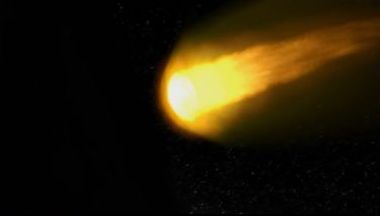 |
| Courtesy of NEC Corporation |
| |
After a seven-year journey,
Hayabusa returned to Earth, and its mission came to an end.
NEC provided total support for the Hayabusa project, including the development of the ion engines and various other devices, orbit design, and space navigation operations.
The know-how obtained through the many challenges overcome during this project will be extremely valuable in taking the next step in space development.
The achievements of
Hayabusa continue to inspire us, guiding us into the future.
NEC Satellite Systems
Name
HALCA (MUSES-B)
Date of launch
February 1997
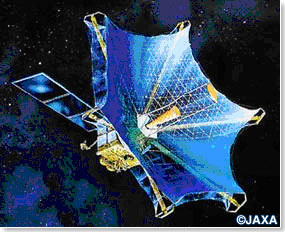 |
| Courtesy of NEC Corporation and JAXA |
| |
Major objectives
Study of large-scale precision deployment structure and mechanism, tests of phase synchronization required for VLBI, etc.
Remarks
Radio telescope satellite performing the world’s first space VLBI observation with resolution 300 times that of the Hubble Space Telescope
Name
NOZOMI (PLANET-B)
Date of launch
July 1998
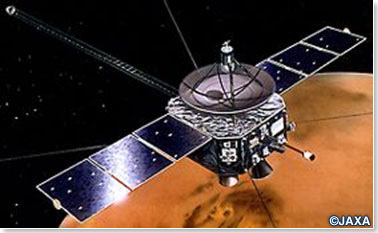 |
| Courtesy of NEC Corporation and JAXA |
| |
Major objectives
Study of the composition, movement and in particular mutual action of solar winds in the upper atmosphere of Mars
Remarks
Japan's first space probe, approaching Mars in December 2003 with the names of 270,000 people aboard
Name
HAYABUSA (MUSES-C)
Date of launch
May 2003
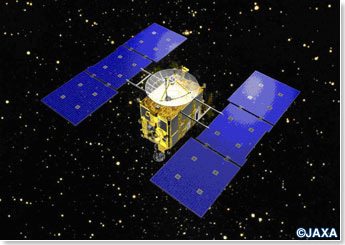 |
| Courtesy of NEC Corporation and JAXA |
| |
Major objectives Scientific
observation of Asteroid ITOKAWA
Remarks
The world’s first space probe to succeed in landing on and taking off from an extraterrestrial celestial body, at present undertaking full-scale cruising for its return trip to Earth in June 2010
Name
SUZAKU (ASTRO-E2)
Date of launch
July 2005
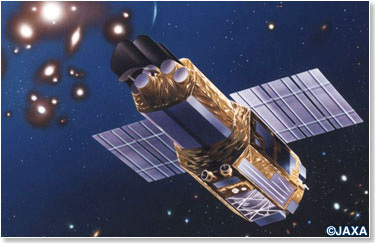 |
| Courtesy of NEC Corporation and JAXA |
| |
Major objectives
X-ray astronomy satellite
Remarks
Equipped with instruments for observing high energy cosmic phenomena such as black holes and galaxy clusters
Name
AKARI (ASTRO-F)
Date of launch
February 2006
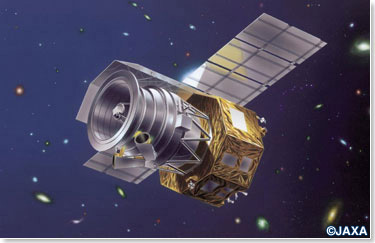 |
| Courtesy of NEC Corporation and JAXA |
| |
Major objectives
Observation for creating an all-sky map in infrared light, taking over from the first global infrared astronomy satellite "IRAS"
http://www.nec.com/global/solutions/space/satellite_systems/sa-tellite004.html#s007
NEC Remote Sensing Applications
NEC Disaster Monitoring Solutions
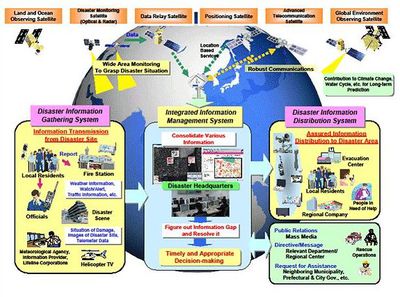 |
| Courtesy of NEC Corporation |
| |
Solutions Overview
Flood Monitor and Alarm System
Through a combination of SAR observation and ground sensors, We can monitor the water levels of rivers in real time.
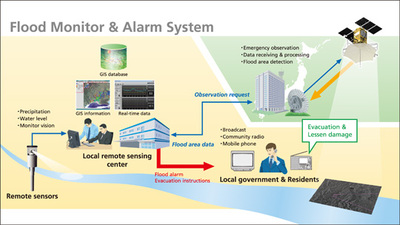 |
| Courtesy of NEC Corporation |
| |
Through integration and analysis of various observation data, accurate evaluation of flood risk becomes possible.
Environment Solutions
SAR observation provides more accurate elevation data than optical observation and can be used for mapping.
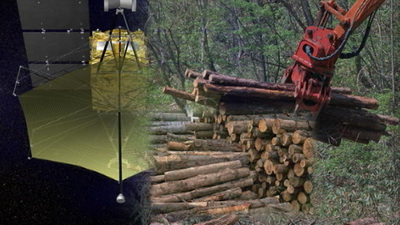 |
| Courtesy of NEC Corporation |
| |
Additionally, it is suitable for natural resource management purposes such as monitoring for illegal logging through periodic observation.
Agricultural Solutions
In the future, the
SAR satellite can be utilized for many ways and bring various benefits to our lives.
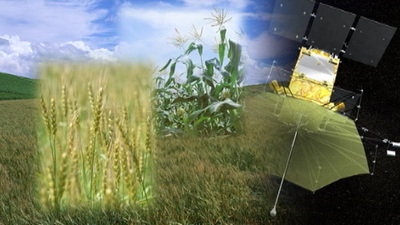 |
| Courtesy of NEC Corporation |
| |
For example, SAR observation can be used to estimate rice-field acreage and contributes to improving agricultural productivity.
SAR Observation System
NEC comprehensively supports all aspects of the
SAR observation system, including not only the development and manufacturing of the satellite itself, but also ground stations, data processing and analysis facilities, application systems, and training on using data.
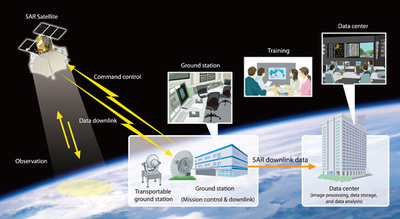 |
| Courtesy of NEC Corporation |
| |
Today, we can proactively detect and prevent disasters by observing the earth from space.
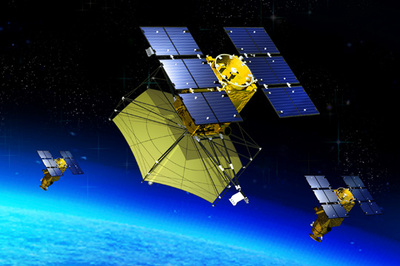 |
| Courtesy of NEC Corporation |
| |
Even when the weather is bad or at night.
The NEC SAR satellite can clearly observe the terrain and geological features.
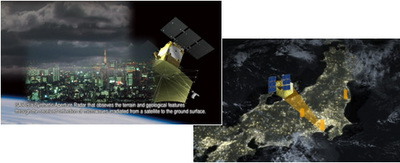 |
| Courtesy of NEC Corporation |
| |
SAR is a
Synthetic Aperture Radar that observes the terrain and geology through the received reflection of microwaves irradiated from a satellite to the ground surface.
http://www.nec.com/global/solutions/space/remote_sensing/index.html
NEXTAR
NEC advanced small satellite provides world-class remote sensing capabilities using newly developed standard bus system, which ensures
High Reliability, Low Cost, Quick Delivery.
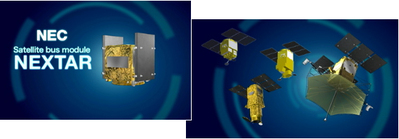 |
| Courtesy of NEC Corporation |
| |
NEC revised the system architecture in order to achieve highly integrated and open system with adopting advanced COTS technology.
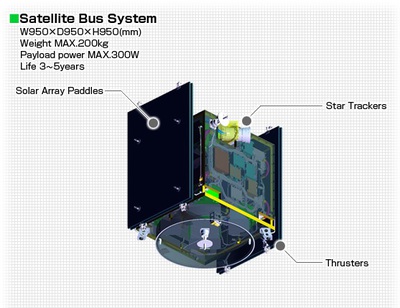 |
| Courtesy of NEC Corporation |
| |
NEXTAR : NEC Next Generation Star
Advanced High Resolution Earth Observation Satellite Series
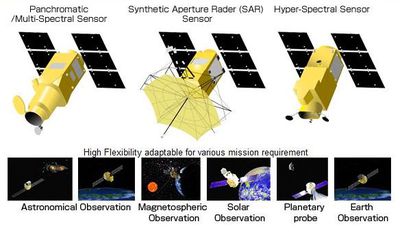 |
| Courtesy of NEC Corporation |
| |
High Flexibility adaptable for various mission requirement
Technical Data
Core Bus Features
- Bus dry mass : 200 kg
- Payload mass capability : 200 kg max.
- Payload power supply : 600 w max.
- Life : 5 years
Telemetry and Command
- Communication frequency : S-band
Mission Data Handling
- Data bus I/F : Space Wire (IEEE 1355)
- Data rate & storage : 200 Mbps, 4GB
Attitude Control
- Control method : 3-axis, zero momentum
- Control capability : ±6.6x10-2 deg
Power
- Bus voltage : 50 V
- Battery : Li-ion
- Solar Array : TJ-GaAs cell
Propulsion (option)
Structure
- Bus module dimension : 1 m x 1 m x 0.8 m
- Module : Bus / Mission separation
System Block Diagram
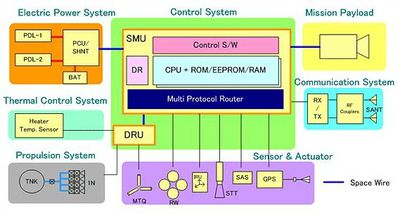 |
| Courtesy of NEC Corporation |
| |
NEC Original Advanced Small Satellite Simulation Data
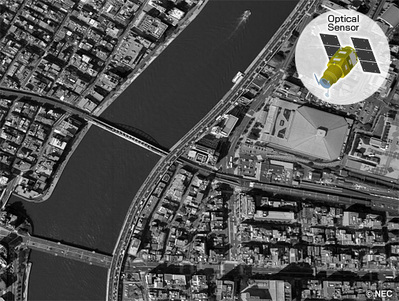 |
| Courtesy of NEC Corporation |
| |
NEC Heritage of SAR Technology
Night view around Shizuoka-city by the PALSAR
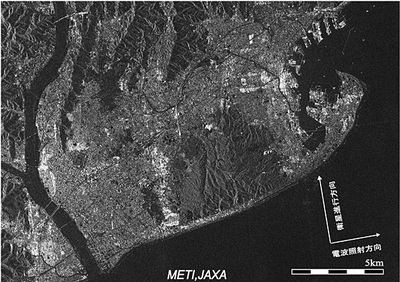 |
| Courtesy of NEC Corporation and JAXA |
| |
Advanced Land Observing Satellite "Daichi"(ALOS)
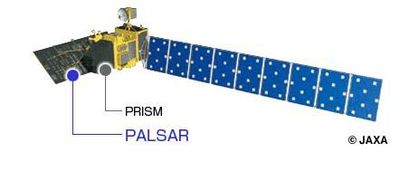 |
| Courtesy of NEC Corporation and JAXA |
| |
http://www.nec.com/global/solutions/space/satellite_systems/nextar.html

